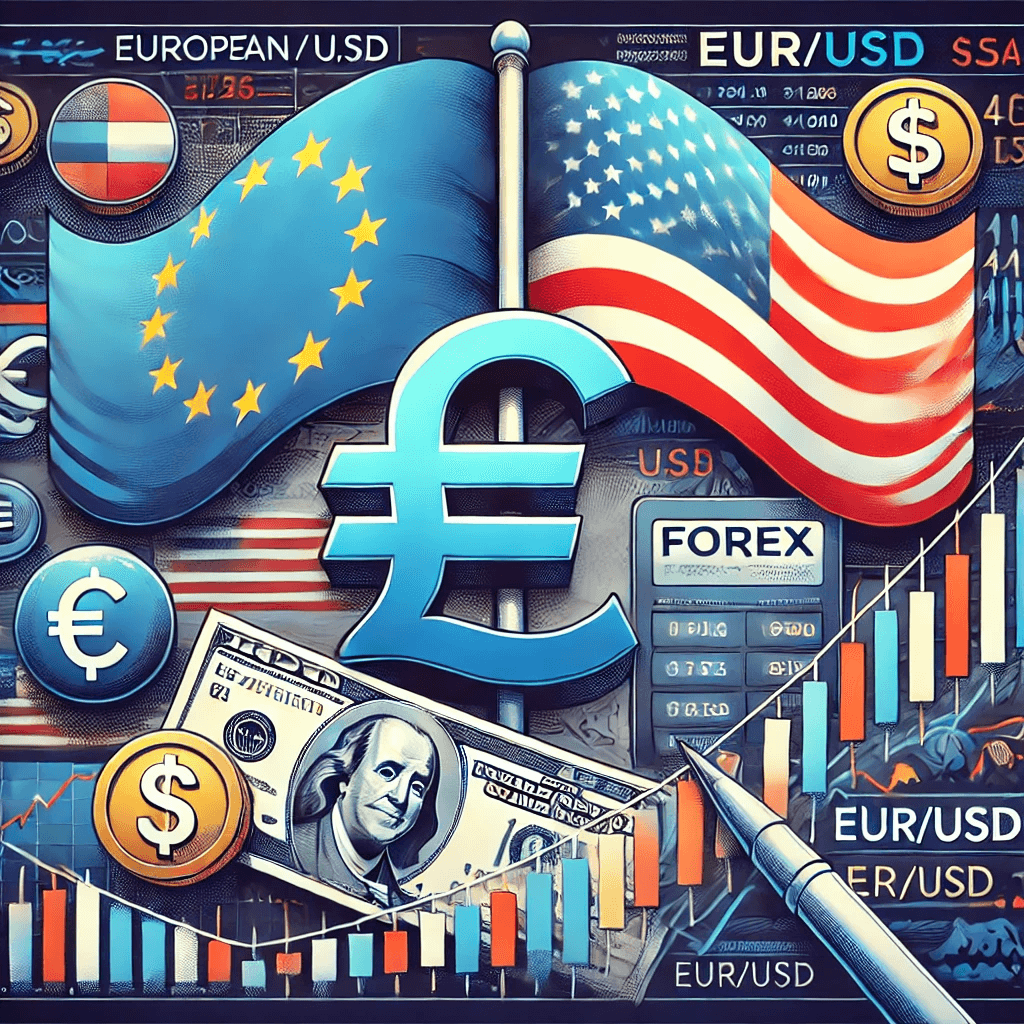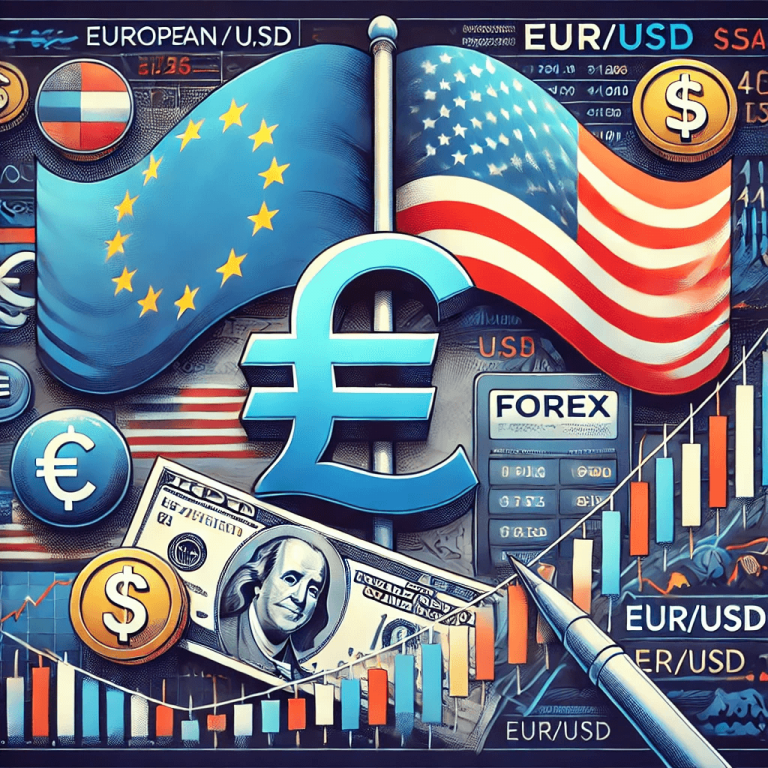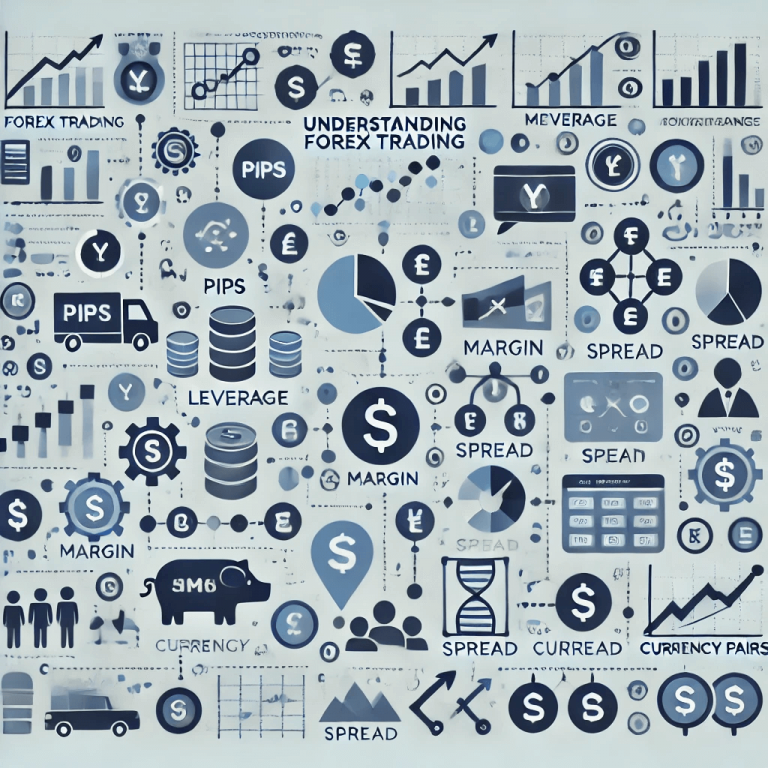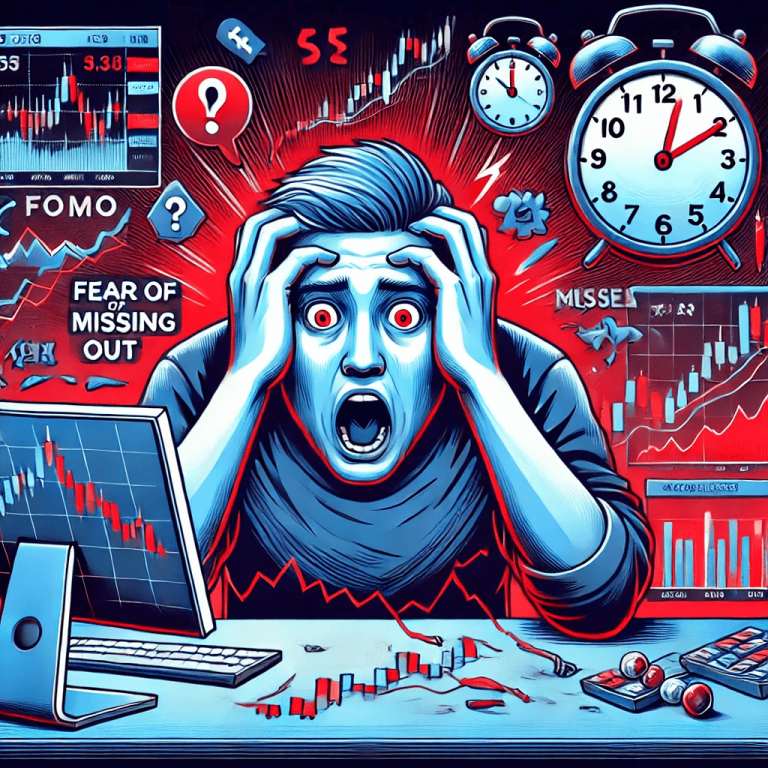The EUR/USD currency pair is the most traded pair on the Forex market, representing the exchange rate between the euro and the US dollar. It is the most important currency pair due to the dominant role both currencies play in the global economy. Changes in the EUR/USD rate have a broad impact on financial markets, making it a key instrument for both investors and traders. J
Table of Contents
- Why is EUR/USD the Most Traded Currency Pair?
- Key Factors Influencing the EUR/USD Exchange Rate
- Trading Strategies on EUR/USD – What Works Best?
- EUR/USD Technical Analysis – How to Correctly Read Charts?
- Key Indicators and Tools
- The Most Common Mistakes Made by EUR/USD Traders and How to Avoid Them?
Key Information
- EUR/USD is the most traded currency pair on the Forex market.
- High liquidity and low spreads enable stable transactions.
- Central bank decisions (ECB and Fed) and macroeconomic data significantly influence exchange rate fluctuations.
- Popular trading strategies include scalping, day trading, swing trading, and fundamental analysis.
- Technical analysis is based on indicators such as RSI, MACD, and candlestick patterns.
- Avoiding overtrading and strictly adhering to a strategy is key to success.
Why is EUR/USD the Most Traded Currency Pair?
The EUR/USD currency pair is the undisputed leader in the Forex market, accounting for approximately 30% of the total trading volume. Its popularity stems from several important factors that make it attractive to both novice traders and experienced investors.
High Liquidity and Low Spreads
One of the reasons why EUR/USD is the most traded currency pair is its exceptional liquidity. Due to the enormous trading volume—reaching billions of dollars daily—the exchange rate of this pair exhibits relatively low volatility compared to other currency pairs. This liquidity allows for easy order execution without impacting the market price, thereby ensuring greater rate stability. According to the International Monetary Fund, the average daily turnover amounts to approximately 1.2 trillion dollars (Source: International Monetary Fund, https://www.imf.org/). This is significant for traders seeking predictability and aiming to avoid large price fluctuations that could lead to unforeseen losses.
Additionally, low spreads on this currency pair result in lower transaction costs. Investors can benefit from the smaller difference between bid and ask prices, making trading more profitable.
| Factor | Description | Market Impact |
|---|---|---|
| Liquidity | Enormous trading volume | Stability and ease of transactions |
| Spreads | Low differences between bid and ask prices | Lower transaction costs |
Strong Correlation with the Global Economy
The EUR/USD exchange rate also exhibits a strong correlation with global economic and political events. Decisions made by the European Central Bank (ECB) and the Federal Reserve (Fed) have a direct impact on this rate, making it highly sensitive to changes in monetary policy. Any change in interest rates—whether in the eurozone or in the USA—has the potential to trigger significant market moves in the EUR/USD pair. Investors closely monitor these decisions to forecast future rate changes and make informed investment decisions.
Furthermore, the EUR/USD pair reacts to key macroeconomic events, such as employment data, economic growth, or inflation. Such data may affect expectations regarding future actions by the ECB and Fed, and consequently, the exchange rate. According to the World Bank, economic growth in the USA reached 2.3% in the last quarter (Source: World Bank, https://www.worldbank.org/).
Key Factors Influencing the EUR/USD Exchange Rate
The EUR/USD rate depends on numerous variables that largely determine the value of both currencies. Monetary policy, macroeconomic data, and geopolitical events are the factors that most significantly influence this rate.
Monetary Policy and Central Bank Decisions
Interest rates have a direct impact on the value of the EUR and USD, as higher rates attract investors seeking greater returns, thus increasing demand for a given currency. When the European Central Bank (ECB) or the Federal Reserve (Fed) adjust interest rates, the EUR/USD rate reacts accordingly. For example, an interest rate hike in the USA may strengthen the dollar relative to the euro. Conferences held by the ECB and Fed are key moments in the market, as they provide insight into future monetary policy, enabling traders to forecast subsequent movements in exchange rates.
Macroeconomic Data and Economic Indicators
Macroeconomic reports, such as Gross Domestic Product (GDP), the Consumer Price Index (CPI), and employment data (NFP), have a significant impact on the EUR/USD rate. GDP growth suggests a healthy economy, usually leading to an appreciation of the currency. Meanwhile, data from the U.S. labor market, based on NFP reports, have shown an average increase of 0.5% over the past year (Source: International Labour Organization, https://www.ilo.org/).
On the other hand, NFP data influence the Fed’s decisions regarding interest rates, and the CPI provides an indication of inflation, which directly impacts monetary policy. Traders monitor these reports to gauge the future direction of currency trends, interpreting the results in the context of market expectations.
Geopolitical and Market Factors
Political events, such as elections or conflicts, can significantly impact the EUR/USD rate. For instance, political uncertainty in the eurozone may weaken the euro, whereas changes in the U.S. government administration can affect the dollar’s value. Moreover, the U.S. Dollar Index (DXY) serves as an important indicator of the dollar’s strength. A strong DXY is typically associated with a stronger dollar relative to other currencies, including the euro.
EUR/USD Trading Strategies – What Works Best?
EUR/USD offers a wide range of trading opportunities thanks to its liquidity and volatility. Numerous strategies can be effective depending on the trader’s approach and preferences. Scalping, day trading, swing trading, and fundamental analysis are popular methods employed by investors looking to profit from fluctuations in this instrument.
Scalping and Day Trading
EUR/USD is an ideal pair for scalping, particularly because of its high liquidity and low spreads. Scalpers aim to profit from small price movements, often executing hundreds of trades daily. Due to the volatility during the European and American sessions—which generate more pronounced market movements—scalpers can capitalize on these periods by quickly opening and closing positions. These sessions also offer increased liquidity, which minimizes the risk associated with wide spreads and reduces the likelihood of significant slippage.

Swing Trading – How to Trade Larger Moves?
Swing trading is a strategy that involves holding positions for several days or weeks, aiming to capture larger market movements. To effectively apply this strategy on EUR/USD, technical analysis is crucial—especially the identification of support and resistance levels. These levels are important as they can serve as turning points in the market where the rate may rebound or break through. Swing traders also examine the trend direction to leverage it by opening long-term positions in order to profit from more substantial price movements.
Fundamental Analysis-Based Trading
Fundamental analysis-based trading in EUR/USD involves monitoring key macroeconomic releases, such as GDP, CPI, or NFP reports. These indicators can suggest the potential direction of the EUR/USD rate over the short or long term. For instance, positive data from the USA may indicate that the dollar will strengthen against the euro, offering an opportunity to open a sell position. The interest rate differential between the ECB and the Fed also influences the long-term trend of EUR/USD – higher rates in the USA can lead to dollar appreciation, an aspect that is crucial when making investment decisions.

EUR/USD Technical Analysis – How to Accurately Read Charts?
Technical analysis is one of the most important tools used by traders to forecast future movements in the EUR/USD rate. Chart reading, identifying key indicators, and recognizing support and resistance levels form the foundation for effective trading strategies on this currency pair. Proper technical analysis allows for more precise investment decisions. As noted by international market expert Dr. Emily Johnson, “Accurate technical analysis is the key to understanding short-term price movements in the EUR/USD market” (Source: World Bank, https://www.worldbank.org/).
Key Indicators and Tools
In the technical analysis of EUR/USD, popular indicators include RSI, MACD, and moving averages. RSI (Relative Strength Index) enables the assessment of whether a currency pair is overbought or oversold, which may signal an impending reversal. MACD (Moving Average Convergence Divergence) points to moments when moving averages begin to converge or diverge, potentially signaling a change in trend. Both short-term and long-term moving averages help in identifying the overall market direction as well as potential entry and exit points.
Candlestick patterns, on the other hand, are extremely helpful in identifying shifts in market sentiment. Patterns such as the hammer, doji, or engulfing can indicate either a trend reversal or the continuation of a movement.
| Indicator | Function |
|---|---|
| RSI | Assessment of overbought/oversold conditions |
| MACD | Trend change |
| Moving Averages | Market direction identification |
Support and Resistance Levels
Support and resistance levels are among the fundamental tools in EUR/USD technical analysis. Support is the level at which the price encounters difficulty falling further, while resistance is the level where the price struggles to rise further. Identifying these key zones is essential to determine where reversals or continuations of the trend may occur.
Breakout and rebound strategies make use of these levels. A breakout occurs when the price surges past a support or resistance level, signaling a potential strong move in the direction of the breach. Conversely, rebounds off support and resistance are employed when the price approaches these boundaries without breaching them, indicating the potential return to the previous trend.
The Most Common Mistakes Made by EUR/USD Traders and How to Avoid Them?
Trading EUR/USD, although popular and full of opportunities, comes with risks. Traders make numerous mistakes that can lead to losses.
Overtrading and Lack of Strategy
One of the most common mistakes made by traders on the EUR/USD pair is overtrading, meaning executing an excessive number of transactions. Even though this pair is characterized by high liquidity, excessive trading can deplete capital and lead to emotional burnout. Overtrading often stems from impatience, the desire for quick profits, or fear of missing an opportunity. Such behavior can result in poor decision-making, as it is not always profitable to react to every market movement.
To avoid overtrading, it is crucial to develop and adhere to a specific trading strategy. A well-defined plan should include criteria for entering and exiting positions, as well as clear guidelines for risk and reward. Sticking to a predetermined strategy helps prevent impulsive decisions.
Ignoring Market Fundamentals
Another common mistake is neglecting market fundamentals. The EUR/USD rate is heavily influenced by decisions from the European Central Bank (ECB) and the Federal Reserve (Fed), as well as key macroeconomic data. Traders who focus solely on technical analysis may overlook important events, such as changes in interest rates, GDP releases, or employment reports. Ignoring this information leads to an incomplete view of the market and increases the risk of making misguided decisions.
To avoid this error, it is essential to keep abreast of economic news and central bank decisions. Events such as changes in monetary policy or the announcement of macroeconomic data can significantly affect the EUR/USD rate. Traders should incorporate these insights into their analysis to better understand the forces driving exchange rate movements and appropriately adjust their strategies.
Trading the EUR/USD pair offers great opportunities, but it requires a solid understanding of the factors affecting the exchange rate, such as monetary policy, macroeconomic data, and geopolitical events. Implementing appropriate strategies—whether through scalping, swing trading, or fundamental analysis—and avoiding pitfalls like overtrading and ignoring market fundamentals are essential. The key to success lies in consistently applying your strategy, conducting both technical and fundamental analysis, and managing risk appropriately, which ultimately enables informed investment decisions.




